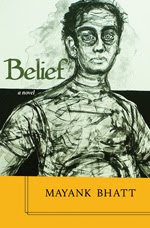In his trademark self-deprecating manner Gavin describes what is a remarkably lyrical and poetic memoir as a “poorly produced account” of a journey he took in January to Jalpaiguri (on the foothills of Darjeeling) to meet his Aunt June, a poet and an advertising professional-turned cloistered nun at the Carmel ashram. (See the video here: Carmel Ashram – A Brief glimpse).
Eschewing hyperbole – which wouldn’t have been out-of-place and perhaps more natural, given that the narrator was meeting his aunt after decades – Gavin’s austere and simple narrative captures the austerity of the ashram, the simple and industrious life that the nuns lead.
The film’s appeal lies in its depiction of India that is rarely seen or acknowledged – an India that has been shining even when its GDP wasn’t galloping.
The subdued and sublime sensibility of a poet surfaces effortlessly and consistently throughout the short film, both in the images and the words that he chooses to tell his story; a sensibility that is clearly a confluence of the filmmaker’s Indian past and Canadian present.
Although, I’m not sure that is his identity.
I was reminded of MG Vassanji’s essay The Postcolonial Writer: Myth Maker and Folk Historian in A Meeting of Streams: South Asian Canadian Literature
Vassanji explains, “...He (the writer) gives himself a history; he recreates the past, which exists only in memory and is otherwise obliterated, so fast has his world transformed... To borrow an image from physics, he creates a field space – of words, images, and landscapes – in which to work with, and install the present.”
South Asian and Indian sensibilities were among the many aspects of a discussion in which I participated a couple of weeks ago.
Travel writer and India tourism expert Mariellen Ward moderated an informal chat in which Jasmine D’Costa, Farzana Doctor, Niranjana Iyer and I shared our views with Mariellen on the rise of Indian writing in English in Canada.
The discussion was in the wake of the launch of Indian Voices 1 – an anthology of prose and poetry by Indians residing in 16 countries across the globe. The second largest number of writers in the volume – that will be released in Toronto next month – is from Canada.
Is there a South Asian or an Indian sensibility that is inherent and perceptible to writers who may be from different parts of the world but are of a South Asian or Indian descent?
In his Introduction to A Meeting of Streams: South Asian Canadian Literature, Vassanji says, “The term South Asian is a self-definition of the kind just introduced. It implies much. It refers to people who trace their ancestry to the Indian subcontinent. It includes, besides those who come to North America immediately from the countries of South Asia, the “East Indians” of the Caribbean and the “Asians” of East and South Africa.
“Obviously, then, it does not represent a single stand, a single outlook or concern in political, cultural, or literary matters. Each of the several South Asian groups comes with greatly differing immediate experience. South Asian is then perhaps a term used as one of contrast...South Asian Canadian Literature, similarly, is not intended to convey a single outlook in literary matters."




It was a thought-provoking discussion, eh? I'm really keen to read Mariellen's piece on the topic.
ReplyDelete